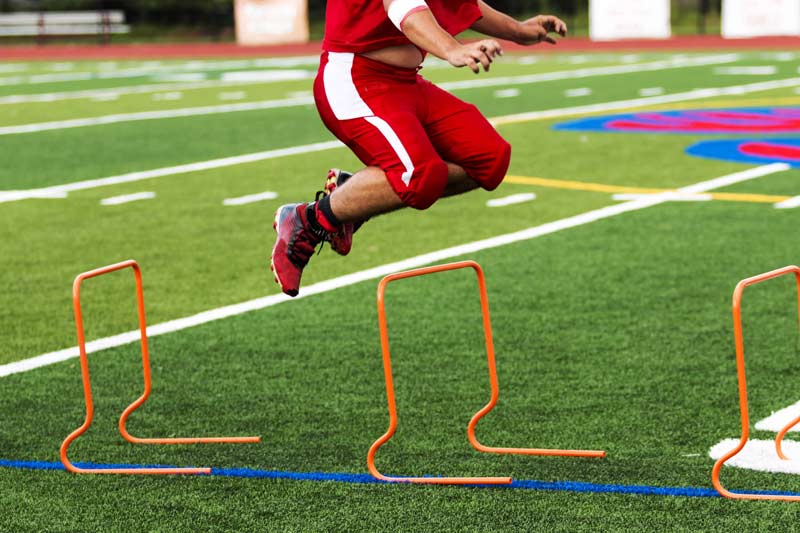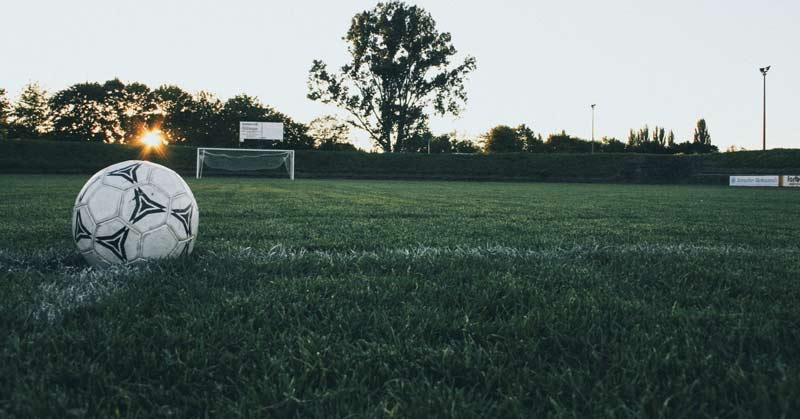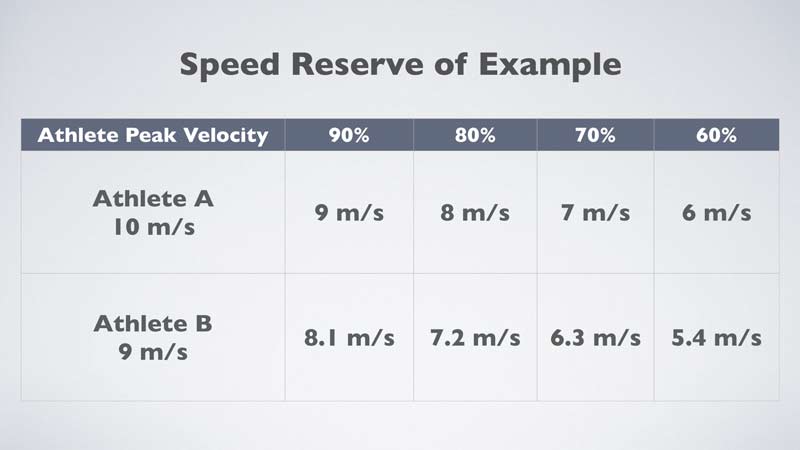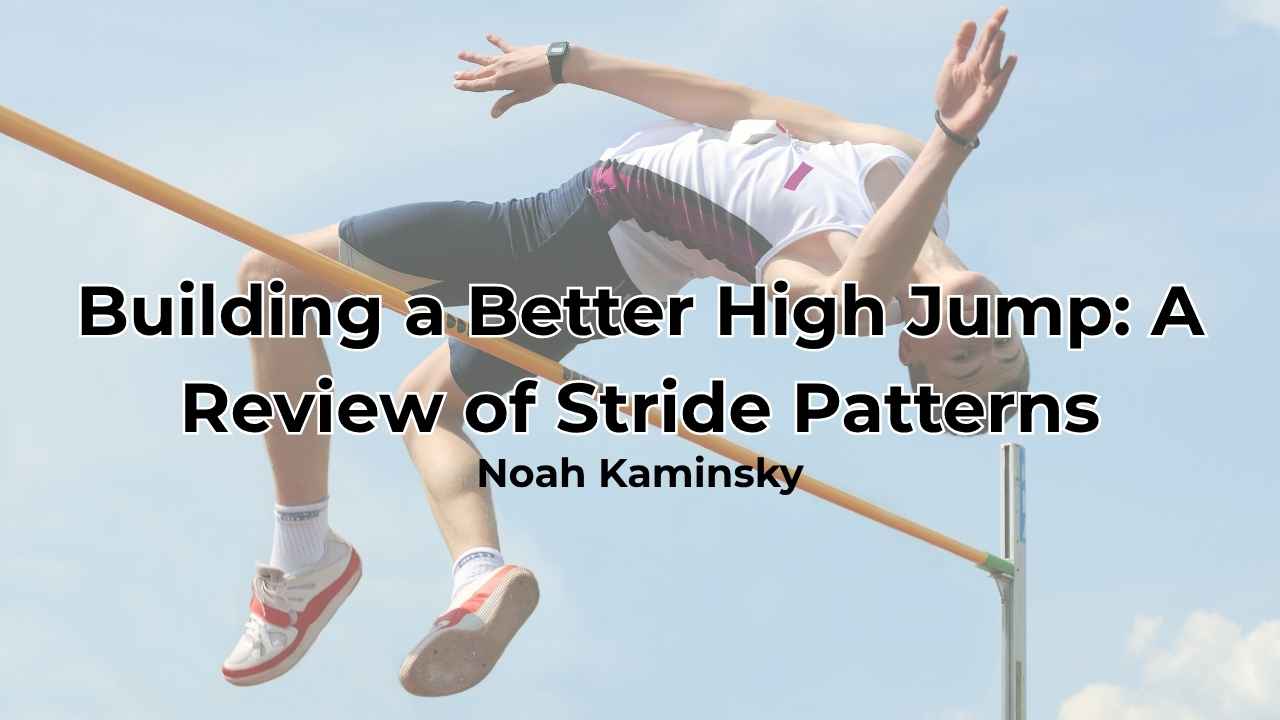[mashshare]

Part of being an effective track and field coach is constructing training for athletes that’s designed to address the demands of their events. Over the years, I’ve developed relationships with numerous coaches from a wide variety of sports. I’m alarmed by the high percentage of coaches who don’t design training based on the demands of their sport. While there are track coaches who fall into this category, the percentage of field and court (FC) coaches (particularly soccer, football, and basketball) is substantially higher.
When I talk to these coaches, they throw around terms like an athlete has great “game speed” or is “football fast.” When asked to explain how their training addresses these phrases, they dance around the question and often give an unsatisfactory answer.
To all FC coaches, before you dismiss me as an out-of-touch track coach, let me bring to light issues of which I am well aware:
- The environment of FC sports is more chaotic than track and field (although track is probably more chaotic than most think).
- Change of direction is prominent in FC sports. It’s not prominent in track and field.
- FC athletes often make reactive decisions (agility) based on game situations, environmental conditions, and the actions of their teammates and opponents. These factors also impact decisions track and field athletes make.
- In FC sports, the positions from which athletes have to generate speed are unpredictable. In track and field, there is minimal variation.
Why should FC sport coaches care about a track coach’s perspective? As a track coach, my X’s and O’s are to get people to run faster, jump higher and farther, and throw farther. Although we don’t study offensive and defensive schemes and don’t scout our opponents, we constantly self-scout our athletes to get them to move better and determine what activities they respond best to in training.
Track coaches committed to their craft constantly study training methods to enhance human performance, so the numbers are smaller on the clock and larger on the tape measure. Taking these factors taken into account, the following represents how I would approach (as a track coach) training design for FC sports.
Addressing Energy System Distribution in Training
All coaches should have a fundamental knowledge of the body’s energy systems. This article by Jason Karp Ph.D. gives a brief overview of the three–phosphagen, glycolytic, and aerobic. Although we try to categorize the energy systems the body uses into sequential silos based on the intensity and duration of exercise, the reality is much more complicated.
Karp states, “The production of ATP is never achieved by the exclusive use of one energy system, but rather by the coordinated response of all three energy systems contributing to different degrees.”1 For a simple example, compare a running back scoring a 50-yard touchdown in both the first quarter and the fourth quarter. The phosphagen system may have been used almost exclusively for the run in the first quarter. But due to fatigue acquired during the game, the run in the fourth quarter may have been a combination of the phosphagen and glycolytic systems. The aerobic system would have a small role during both runs.
Despite the gray area that exists in producing energy, coaches must know the demands of their sport and how energy system usage applies. American football incorporates a short high-intensity effort followed by a break. At the high school level, the average play is 5.6 seconds with 30.8 seconds between plays.2 Basketball and soccer, on the other hand, involve athletes in constant motion who have periods of high and low effort depending on the game situation.
Due to the different gameplay demands, the percentage of training that addresses each energy system should vary. What is the appropriate distribution and what are the advantages obtained from training each? This part of my series on energy systems will address the phosphagen system.
The Phosphagen System and Maximum Speed
The phosphagen system is prioritized for maximum efforts up to ~10 seconds. For FC sports, this is short bouts of maximum effort. Although various research does not come to a common percentage of phosphagen system usage for FC sports, all agree it’s used the most. In football, it’s almost used exclusively, and in soccer and basketball, it’s used only slightly less.
Despite this fact, many FC coaches have a gaping hole in their programming. While many do well training the phosphagen system in the weight room, their systems fail to include the best way to train it–sprinting. Training to enhance maximum speed not only leads to a higher top-end speed, but also improves acceleration, strength, change of direction, and speed reserve. 3, 4, 5
Furthermore, a 2012 study of professional soccer players showed that linear sprinting is the most frequent action in goal situations. Because sprinting has a global effect on athleticism and due to its overall importance in FC sports, it’s the type of max effort activity I’ll address.

All coaches want faster athletes, but many have their athletes do everything to get faster except sprinting maximally with full recovery. If I want to get better at shooting free-throws, I shoot free-throws. If I want to get better at throwing a football, I throw a football. The principle of specificity must reign supreme when attempting to enhance maximum speed.
We can train this quality by getting the athlete into a starting position (use a wide variety) and sprinting just beyond the point where they attain maximum speed. For most high school athletes, max speed occurs between 15m (novice) and 50m (elite), so sprints between 20m and 60m fit the bill. A guideline for rest is one minute for every 10m sprinted in a rep (40m sprint = 4 minutes rest).
In terms of dosage, athletes should sprint one to three times per week depending on the time of year and the demands of their position. To ensure maximum efforts, sprints must be timed. An automated system such as Freelap is ideal, but a stopwatch is better than nothing.
According to Dr. Pat Davidson, research shows that the ability to enhance the phosphagen system’s percentage of energy contribution does not increase much, if at all, through training. 6 My takeaway is that the volume of max effort activity in training does not have to be high. If we’re not altering the energy system much, do what is needed to develop the nervous system and nothing more. For example, a typical maximum speed day for our program rarely exceeds 160m of total volume.
Sprinting with full recovery enhances #maximumspeed, says @HFJumps. Share on XJust because the phosphagen system’s contribution may not improve much with training does not mean there are no benefits regarding energy. The primary purpose of sprinting with full recovery is to enhance maximum speed. All FC coaches should desire this. The by-product of increasing maximum speed is improving speed reserve.
Speed Reserve
Speed reserve is not a complicated concept: The faster an athlete’s maximum speed, the faster their sub-maximum speed. For example, suppose Athlete A has a maximum speed of 10 m/s, and Athlete B has a maximum speed of 9 m/s. A percentage of their sub-maximum speeds are listed in the table below:

While these numbers are arbitrary, they get the point across. The faster athlete can exhibit less effort and still move faster (Athlete A can move at 82% and be faster than Athlete B’s 90%). If I were an FC sport coach, I would like a team full of athletes who could move faster without having to try as hard. It would be beneficial as the game continues to progress. If two small forwards are playing man-to-man against each other and one can average an 80% effort to guard the other while the other has to exert maximum effort while on defense, who will be in a better place once the fourth quarter rolls around?

Training at maximum speed with full recovery improves maximum speed capabilities, which raises the level of sub-maximum speed capabilities. The carry-over is that a faster athlete has better sub-maximum speed repeatability because they can “try less” (leaving more energy in the tank) while still meeting the demands of a task.
Unfortunately many coaches view improving repeat sprint ability (RSA) from only one end of the spectrum. Gassers, ladders, and even standard wind sprints are often performed without full recovery and until failure (primarily addressing the glycolytic system). The work can be valuable, but in many cases it’s overdone. While the capacity to operate at a submaximal level may improve, an athlete’s maximum speed is not improving very much, if at all.
It would behoove these athletes to train on the other end of the spectrum. Purdue men’s basketball strength and conditioning coach, Josh Bonhotal, says it best, “A common mistake is to attack repeat sprint ability when you have never truly developed speed and thus sprint ability itself.” 7

Greater Max Speed ⇨ Greater Strength?
This idea seems foreign to most in the FC sport arena, at least at the high school level. Most would view it the other way around–get stronger to get faster. I have great respect for strength coaches, but I think many promote this idea and chase arbitrary weight room numbers to justify their positions. Also, there are high school FC coaches who promote this idea to keep their athletes from competing in other sports. They may do it because that’s what they believe regarding training or because they feel it necessary define an athlete’s high school experience. In either case, the motives and rationales are questionable.
An athlete can move faster by increasing force put into the ground (via higher brute force or improving the direction of force), or decreasing time spent on the ground. If an athlete is in a maximum speed training program, both often occur. Being able to deliver more force in less time is an ideal type of functional strength. If the body’s various structures can handle a higher speed, it’s logical to conclude that the structures are stronger. Furthermore, sprinting can increase protein synthesis pathways by as much as 230%.8
Being able to deliver more force in less time is an ideal type of functional strength, says @HFJumps. Share on XReaching a higher top-end speed not only improves force output but also improves the ability to absorb higher forces. A faster athlete will decelerate from a higher speed than a slower athlete. If there is a defined distance to decelerate, the faster athlete will absorb more force over that distance. The greater eccentric loads placed on the faster athlete lead to an increase in strength. The ability to absorb force is essential for FC sports due to the change of direction requirements.
If athletes train at maximum speed, they will get faster. Being able to squat, bench, clean, and deadlift more weight will probably help a high school athlete get faster. In a presentation given at ALTIS, Arizona Cardinals strength and conditioning coach Buddy Morris stated, “Sprinting drives up your weights, weights don’t necessarily drive up your sprinting.” 9 Why not create a program that uses the best of both worlds?
Max Speed and Injury Resistance
Sprinting to achieve maximum speed is highly neural, and it must be trained so the athlete’s nervous system does not short circuit during competition. If the nervous system is not ready to handle operating at maximum speed, injuries (such as pulled muscles) are more likely to occur.

On a side note, for those who don’t believe muscle pulls can be a neurological issue instead of a muscle issue, there’s a 2014 study of elite-level soccer players that showed sports-related concussions increased the risk of a subsequent injuries (such as a hamstring or groin pull) by 50%.10

The flow charts are different, but they end up in the same place. In the first, the control center is sending enough power to light a stadium to a system that is only equipped to light a bedroom. The second is like flipping on a bedroom light switch to light the kitchen, but the garage light turns on 5 minutes later. In other words, the control center (brain and spinal cord) is sending wrong signals to the nerves, which are getting muscles to contract and relax at inopportune times.
Many FC coaches are scared to have athletes sprint in training because they see players get injured when they sprint during a competition. I understand that player availability is a huge factor of success. When we introduce sprinting in a conservative and progressive manner, it is safe and leaves the athlete better prepared. I often wonder if the coaches who don’t train sprints due to injury risk are the same ones who have athletes hold logs over their heads while being sprayed with water–seems like conflicting logic.
Coaches who are serious about their craft pride themselves on their ability to prepare. It only makes sense to address competition demands in training.
Strength coach Kyle Kennedy recently tweeted, “The ability to create and close space is most important in most team sports.”11 Addressing the phosphagen system in a balanced format which includes sprinting, agility, and strength training will lead to improvements in this ability.
In the upcoming part(s) of this series, I will address the glycolytic and aerobic energy systems along with some other considerations.
Since you’re here…
…we have a small favor to ask. More people are reading SimpliFaster than ever, and each week we bring you compelling content from coaches, sport scientists, and physiotherapists who are devoted to building better athletes. Please take a moment to share the articles on social media, engage the authors with questions and comments below, and link to articles when appropriate if you have a blog or participate on forums of related topics. — SF
[mashshare]
References
- Karp, Jason. “The Three Metabolic Energy Systems.”
- Holler, Tony. “New Ideas for Old School Football Coaches.”
- Hansen, Derek. “Sprint Training: The Complete System.”
- Hansen, Derek. “The Relevance and Importance of Speed Reserve in all Sports.” Strength Power Speed, July 17, 2014.
- Clark, Ken. “The Mechanics of Underlying Linear Sprinting Performance.” Speed Science. PowerPoint Presentation.
- Davidson, Pat. “Episode 104: Interview with Pat Davidson – Part 2 – ESD & Mass.” All Things Strength and Wellness Podcast. November 5, 2016.
- Bonhotal, Josh quoted in Tony Holler, “Basketball Advice from a Sprint Coach.”
- Poliquin Group. “Eight Reasons Everyone Should Do Sprints” March 20, 2013.
- Morris, Buddy (via @StuartMcMillan1). “Sprinting drives up your weights. Weights don’t necessarily drive up your sprinting.” 3:54 p.m. – November 11, 2016.
- Nordström A, Nordström P, Ekstrand J. “Sports-related concussion increases the risk of subsequent injury by about 50% in elite male football players.” British Journal of Sports Medicine, July 31, 2014.
- Kennedy, Kyle (via @kennedyk24). “The ability to create and close space is most important in most team sports.” 9:07 a.m. – October 26, 2017.




